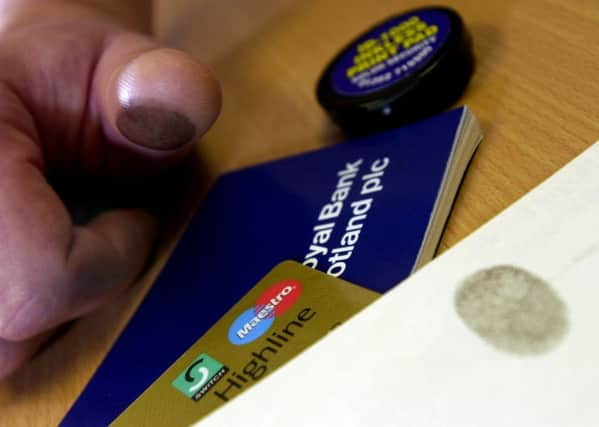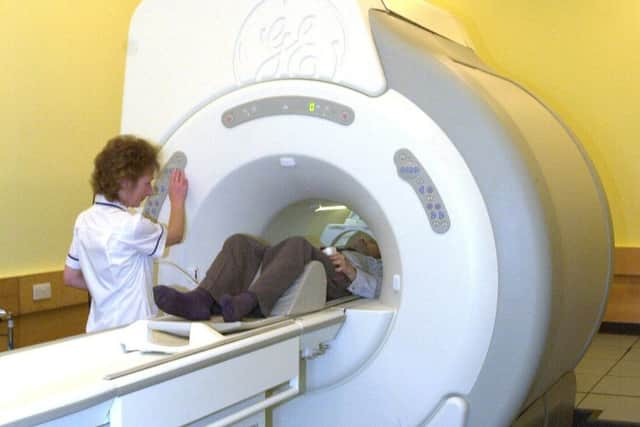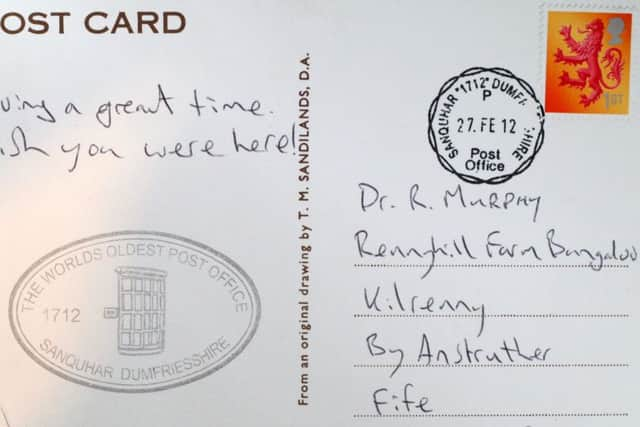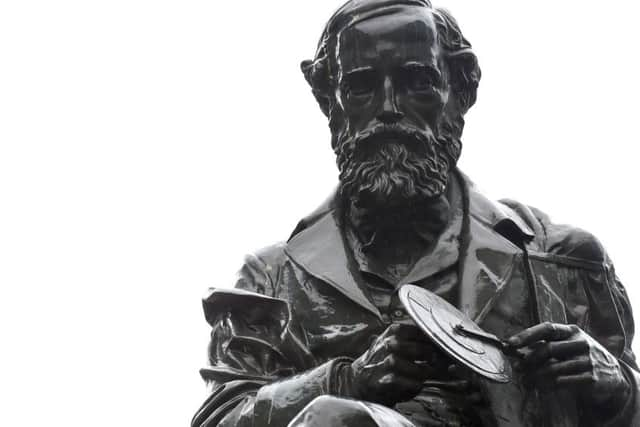Ten useful inventions you didn't know were Scottish


John Logie Baird introduced television to the world. Little did he know it would be watched by billions of people every day, becoming one of the most profitable inventions ever.
And where would we be without our mobile phone if it had not been for Alexander Graham Bell, who made the original wire telephone a reality over a century ago.
Advertisement
Hide AdAdvertisement
Hide AdAnother major discovery was that of penicillin – thanks to Scots scientist Alexander Fleming - which has helped save billions of lives since the 19th century.


There is also the bicycle, Tarmac and even Halloween hailing from these shore.
But there are other inventions used day-to-day which are not widely known to be the imaginative brainchild of the Scottish.
Here are the top 10, possibly, most surprising of them:
* The adhesive postage stamp


James Chalmers, born in Arbroath in 1782, helped establish major postal reform in the 1830s with the introduction of the postage stamp.
There have been numerous ways of sending messages over the years and, despite the recent influence of social media, post is still one of the most commonly used, thanks to the innovation of Chalmers, originally a weaver and then newspaper publisher in Dundee.
* MRI scanner
John Mallard made the breakthrough for Magnetic Resonance Imaging (MRI) while working as a scientist at the University of Aberdeen.


In 1980, he and his team pioneered the way in which the human body is viewed. They obtained the first clinically useful image of a patient’s internal tissues.
Advertisement
Hide AdAdvertisement
Hide AdMRI, now considered to be a safer diagnostic tool than X-rays and is more suitable for soft tissue, builds up a picture of the human body by using high frequency radio signals.
* Radar
Sir Robert Alexander Watson-Watt, born in 1892 in Brechin, was a pioneer and significant contributor to radar development.


Radar was initially nameless and researched elsewhere, particularly in Germany, but it was expanded in 1936 when Watson-Watt became superintendent of a new establishment under the Air Ministry in Suffolk. The system they developed provided the vital information that helped the RAF win the Battle of Britain during WWII.
Radar now provides vital information for multiple uses around the globe, including pinpointing the exact location of planes and boats.
* Criminal Fingerprinting
Henry Faulds was a Scottish physician, missionary and scientist, born in 1843, who aided the development of forensic fingerprinting.
He spent much of his life as a missionary in Japan and whilst accompanying a friend at an archaeological dig he noticed how the impressions left by craftsmen could be left in ancient clay fragments.
Examining his own fingertips and those of friends, he became convinced that the pattern of ridges was unique to each individual. He then helped an alleged thief be found innocent by using the innovation.


* Colour Photography
Advertisement
Hide AdAdvertisement
Hide AdEdinburgh physicist James Clerk Maxwell, born in 1831, was a scientist in the field of mathematical physics whose most notable achievement was to formulate the classical theory of electromagnetic radiation, bringing together for the first time electricity, magnetism, and light as manifestations of the same phenomenon.
In 1855, Maxwell proposed that, if three black-and-white photographs of a scene were taken through red, green and blue filters and transparent prints of the images were projected onto a screen using three projectors equipped with similar filters, when superimposed on the screen the result would be perceived by the human eye as a complete reproduction of all the colours in the scene.
During an 1861 Royal Institution lecture on colour theory, Maxwell presented the world’s first demonstration of colour photography by this principle of three-colour analysis and synthesis. Thomas Sutton, inventor of the single-lens reflex camera, took the picture.
* Refrigerators
William Cullen, born in 1710 in Hamilton, is the man behind the refrigerator. Cullen demonstrated his discovery at Glasgow University in 1748, although no proposal was made to commercialise the technique at the time.
He achieved the effect of refrigeration by boiling ethyl ether in a partial vacuum. It was only in the 19th century that freezing became a commonplace method of preserving perishable goods such as meat, a development which coincided with innovations in electrical motors that replaced more primitive ways of transporting food via ships over long distances. An estimated 500 million fridge-freezer units are now used worldwide.
* Bovril
John Lawson Johnston was born in 1839 in Roslin, Midlothian and, while studying in Edinburgh, met Lyon Playfair, a professor of chemistry, and developed an interest in food science and preserving.
While working at his uncle’s butcher shop he made a special concentrated beef stock which sold well and he opened a second shop and factory in Holyrood.
Advertisement
Hide AdAdvertisement
Hide AdIn 1871, he emigrated to Canada. The French Army gave him a contract to supply the army with preserved beef products. He developed Johnston’s Fluid Beef (brand Bovril). He sold his Canadian business in 1880, after his factory burned down, and went to England where he lived at ‘Bovril Castle’ and developed the Bovril brand across Britain, based on the commercial promotion of dietetics.
When he sold the Bovril company in 1896 he earned £2 million, although he stayed on as Chairman until his death in 1900.
* Flushing toilets
Alexander Cumming, born in Edinburgh in 1733, was a mathmetician, watchmakerand instrument inventor, who was the first to patent a design of the flush toilet.
The S-shaped trap, or bend, was invented by Cumming in 1775 to retain water permanently within the bowl, thus preventing sewer gases from entering buildings.
It survives in today’s plumbing modified as a U- or J-shaped pipe trap located below or within a plumbing fixture.
* Toaster
Alan MacMasters was a scientist and inventor, born in Edinburgh in 1865.
Around 1893, MacMasters had developed a machine which could toast bread using iron wires.
Advertisement
Hide AdAdvertisement
Hide AdHis design saw bread sit on a rack while electrical current passed through the wires, heating them and toasting the bread.
He made very little from his invention, despite it now being in millions of homes. The real profits went to American Charles Strite, who modified it in the 1920s by adding the automatic pop-up feature.
* Lawnmowers
Alexander Shanks, born in 1801 in Arbroath, created the machine which is credited as the direct predecessor of the modern mower – which also rolled the grass.
Although he died in his 40s, his son showed the mowers at the Great Exhibition of 1851, which led to a successful business that continued for decades.
Their mowers went on to cut the tennis courts at Wimbledon, the cricket grounds at Lords and the Old Course at St Andrews.
* Cloning
Dolly the Sheep was born in 1996 and could prove to be one of the most important scientific inventions to come in future years.
She was the first mammal cloned from an adult somatic cell, using the process of nuclear transfer.
Advertisement
Hide AdAdvertisement
Hide AdShe was cloned by Sir Ian Wilmut, Keith Campbell and colleagues at the Roslin Institute, part of the University of Edinburgh, Scotland, and the biotechnology company PPL Therapeutics, based near Edinburgh.
She was born on 5 July 1996 and died from a progressive lung disease 5 months before her seventh birthday.